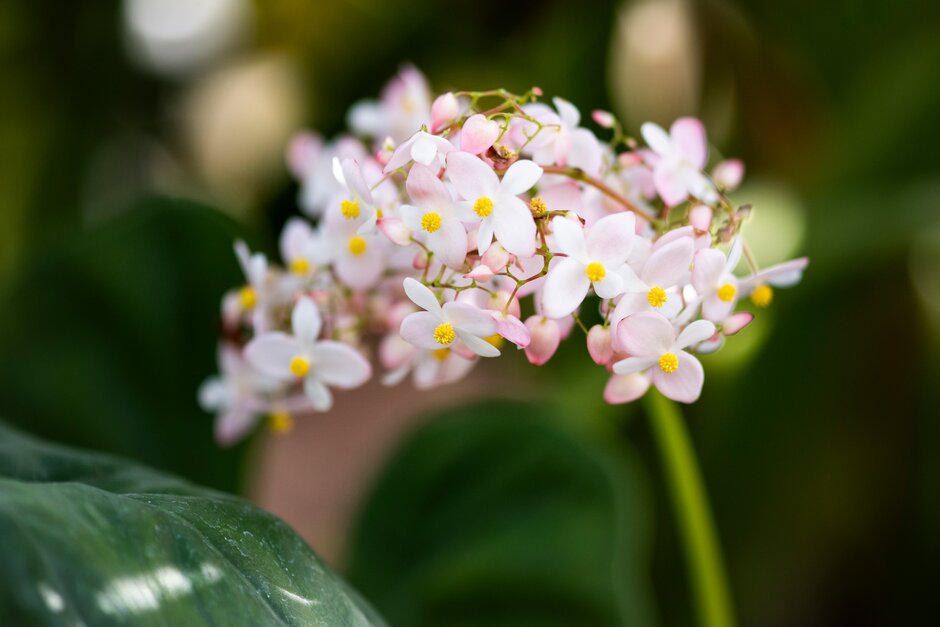Begonia goegoensis
fire-king begonia
A compact, rhizomatous evergreen perennial, with short creeping stems. Leaves are large and round to ovate, dark green and bronze with pale green veining. Young leaves are often red, and older leaves retain red edges and undersides. Produces sprays of pale pink flowers on arching stems in summer
Size
Ultimate height
0.1–0.5 metresTime to ultimate height
2–5 yearsUltimate spread
0.1–0.5 metresGrowing conditions
Moisture
Well–drainedpH
Acid, NeutralColour & scent
| Stem | Flower | Foliage | Fruit | |
| Spring | Green Red | |||
|---|---|---|---|---|
| Summer | Pink | Green Red | ||
| Autumn | Green Red | |||
| Winter | Green Red |
Position
- Full sun
Aspect
South–facing or West–facing
Exposure
Sheltered Hardiness
H1ABotanical details
- Family
- Begoniaceae
- Native to GB / Ireland
- No
- Foliage
- Evergreen
- Habit
- Bushy
- Potentially harmful
- Ornamental bulbs - not to be eaten. Wear gloves and other protective equipment when handling. Pets: Ornamental bulbs - not to be eaten - see the HTA guide to potentially harmful plants for further information and useful contact numbers
- Genus
Begonia can be annuals, evergreen or deciduous perennials or shrubs, with fibrous, tuberous or rhizomatous roots and usually asymmetrical leaves, often strikingly patterned, and small or large flowers, both male and female in the same cluster
- Name status
Correct
How to grow
Cultivation
Grows best if kept between 19-23°C (66-73°F), in bright light with shade from direct sun, in an open. free-draining potting mix. Enjoys fairly high humidity. In the growing season, water by immersing pots and allowing to drain; avoid waterlogging as this may cause rot
Propagation
Propagate by seed, leaf cuttings or root cuttings (sections of rhizome)
Suggested planting locations and garden types
- Houseplants
- Conservatory and greenhouse
Pruning
Remove faded flowers and leaves as necessary
Pests
May be susceptible to caterpillars, mealybugs, mites, thrips, vine weevil and aphids
Diseases
May be susceptible to grey moulds, powdery mildews, and stem and rhizome rot
Get involved
The Royal Horticultural Society is the UK’s leading gardening charity. We aim to enrich everyone’s life through plants, and make the UK a greener and more beautiful place.
